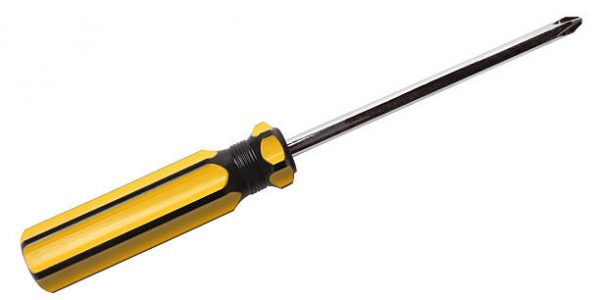Project Report For Screwdrivers
Introduction
Project Report for Screwdrivers is as follows
A standard screwdriver consists of a handle and a shaft with a tip that the user inserts into the screw head before turning the handle. This sort of screwdriver has been replaced in many businesses and homes by a more modern and versatile device, a power drill, because it is faster, easier, and can also drill holes.
The shaft is frequently made of robust steel to resist bending or twisting. The tip can be hardened to promote wear resistance, covered with a black tip coating to increase visual contrast between tip and screw, or ridged or treated to provide greater “grip.”
Screwdriver tips come in a range of shapes and sizes (List of screwdrivers). Screwdriver, flathead (or slotted head): While flathead screws and screwdrivers are no longer widely used in residential construction, you will need them to remove or install plate covers on outlets and switches, as well as in other situations when it is critical not to overtighten a screw.
They are still used in furniture construction and modest cabinet-making projects. Rakes, garden forks, and pruning shakes are further examples of outdoor tools. Tapes, laser measurers, and other layout and measuring tools are available. Taps and dies are tools used to create threads.

Types of Screwdrivers
- Screwdriver Pozidriv: A Pozidriv screwdriver is essentially an upgraded version of a Phillips screwdriver. These bits feature the same self-centering Phillips recesses as the Phillips bit, but a blade between the wings. These blades fit into the notches in a Pozidriv screw’s recess, giving more surface area and avoiding sliding when applying increased torque, such as when using an impact driver or drill supplied with a Pozidriv bit.
- Spanner Driver: The forked points of spanner screwdrivers feature two prongs. They are frequently employed in tamper-proof hardware applications like fire alarms, commercial door hardware, electronic devices with codes, and equipment that the manufacturer considers should remain closed. These screws can’t be opened with a conventional screwdriver because they have two tiny recesses in the heads of their bodies.
- Frearson Driver: Reed and Prince drivers, sometimes known as Frearson drivers, are common in the marine and boating industries. These screwdrivers appear to be extremely similar to Phillips bits at first glance, however they are not. Furthermore, the inside angles of a Frearson bit’s cross pattern are much sharper, providing for more surface area during tightening (assuming a Frearson drive is used, of course).
- Screwdriver for Jewellers: Precision screwdrivers, often known as jeweler’s screwdrivers, are tiny screwdrivers made specifically for use with tiny fasteners. They often have a large cap on top and are made entirely of metal. This cap spins, enabling the user to stabilize the screwdriver with a fingertip on top and control it with the thumb and middle finger. This enables precise control when handling tiny screws.
Get Completely Custom Bankable Project Report
Market Potential Of Screwdrivers
From 2022 to 2030, the Global Screwdriver Market is expected to develop at a 5.5% CAGR. The increasing need for cordless screwdrivers, as well as the expanding demand for industrial and domestic applications, are driving growth in the screwdriver market. During the forecast period, North America is predicted to lead the global screwdriver market in terms of revenue, followed by Europe, Asia Pacific, Latin America, and the Middle East and Africa.
The market is divided into two sections based on application: industrial and household. With a revenue share of more than 40% in 2021, the industrial category is predicted to lead the global screwdriver market. The increased demand for tools in areas such as automotive, construction, and electronics can be ascribed to the expansion. Rapidly increasing industrial sectors in developing countries are expected to drive industry growth during the forecast period.
The household category is also expected to rise significantly throughout the projection period, owing to rising disposable income among consumers worldwide, as well as rising urbanisation trends in emerging nations such as China and India.

